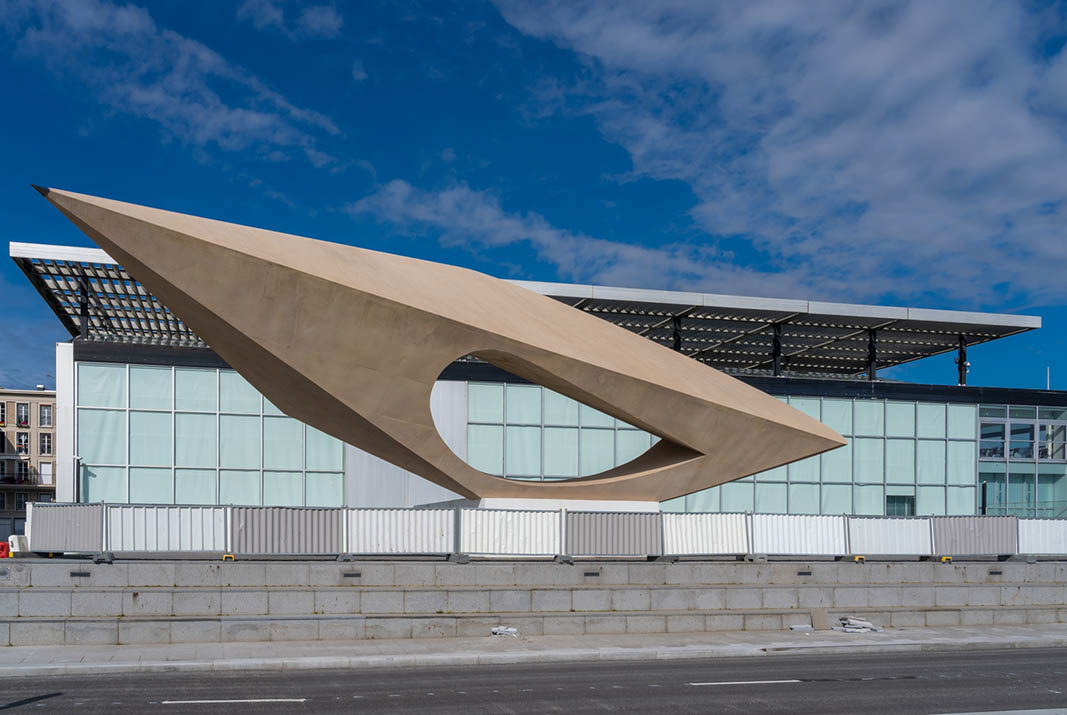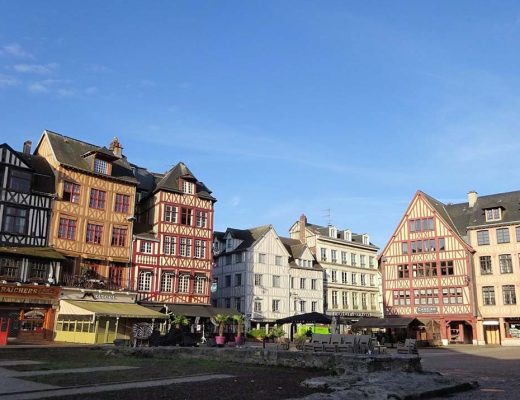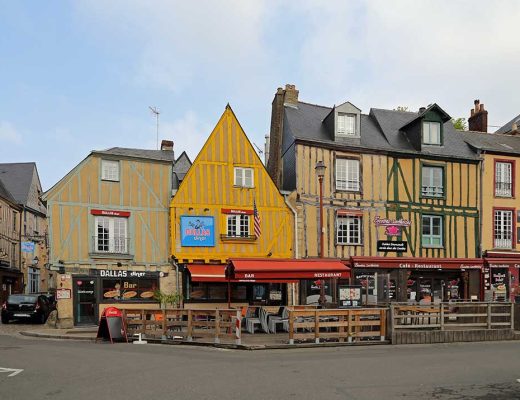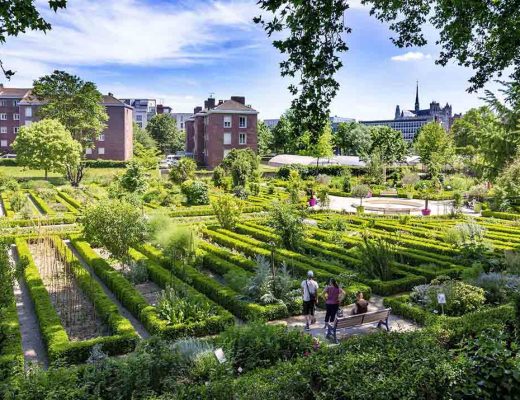I still remember the exact feeling of stepping off the train at Le Havre on a chilly January morning. The air had that unmistakable bite of the sea, a salty freshness that cut through the crisp winter air. The sky was a muted grey, heavy with clouds, as if someone had taken a charcoal pencil and shaded the horizon. Coming from Paris, where the January cold wraps itself around narrow boulevards and ornate Haussmann façades, Le Havre felt like a different planet altogether — stark, modernist, and bracingly honest.
I had one main goal for this trip: to visit the André Malraux Museum of Modern Art, or MuMa as it is affectionately known. I had heard whispers from fellow travelers and art lovers that this museum, perched directly on the edge of the sea, contained one of the finest Impressionist collections outside of Paris. But more than that, I had heard that the building itself was an experience — a temple of glass and light that seemed to dissolve into the horizon.
Traveling in January might sound unappealing to some — short days, unpredictable weather, and fewer crowds. For me, it felt like the perfect time. I wanted solitude with the paintings. I wanted to stand in front of Monet’s brushstrokes without feeling elbows press into my side. I wanted to breathe in the silence of the sea and let the art wash over me.
First Impressions of Le Havre
Le Havre is not like other French cities. After being destroyed during World War II, it was rebuilt under the vision of architect Auguste Perret, who used reinforced concrete to create a strikingly modern cityscape. UNESCO has recognized the city center as a World Heritage Site, not for its old-world charm but for its architectural audacity.
Walking from the station to the seafront, I felt as if I was moving through a post-war dreamscape: long, rectilinear boulevards, uniform facades, and vast open spaces. In January, with bare trees lining the streets and a faint drizzle hanging in the air, it felt almost cinematic.
By the time I reached the waterfront, the wind was whipping at my scarf, and the sea stretched out before me in all its winter majesty. And there it was: MuMa, a low, modernist glass rectangle standing almost defiantly at the edge of the channel. It didn’t try to compete with the sea; instead, it seemed to embrace it.
The Story of MuMa: A Museum Born from Vision
The André Malraux Museum of Modern Art (MuMa) is located at 2 Boulevard Clemenceau, 76600 Le Havre, right on the edge of the sea, near the mouth of the Seine estuary.
The museum opened in 1961, making it one of the first major museums built in France after World War II. It was inaugurated by André Malraux himself, who was not only France’s Minister of Cultural Affairs but also a novelist, philosopher, and passionate advocate for the democratization of art. His dream was to create a space where art would be illuminated by natural light and directly connected to the sea — and MuMa fulfills that dream to this day.
The building, designed by architects Guy Lagneau, Raymond Audigier, and Jean Dimitrijevic, is a masterpiece of glass, steel, and open space. Standing in front of it, I was struck by how it seems to float — its vast glass walls reflecting the sea and sky. Unlike many museums that feel enclosed, MuMa invites light in, making the artworks dance with the changing daylight. In January, with the low northern sun, the effect was magical.
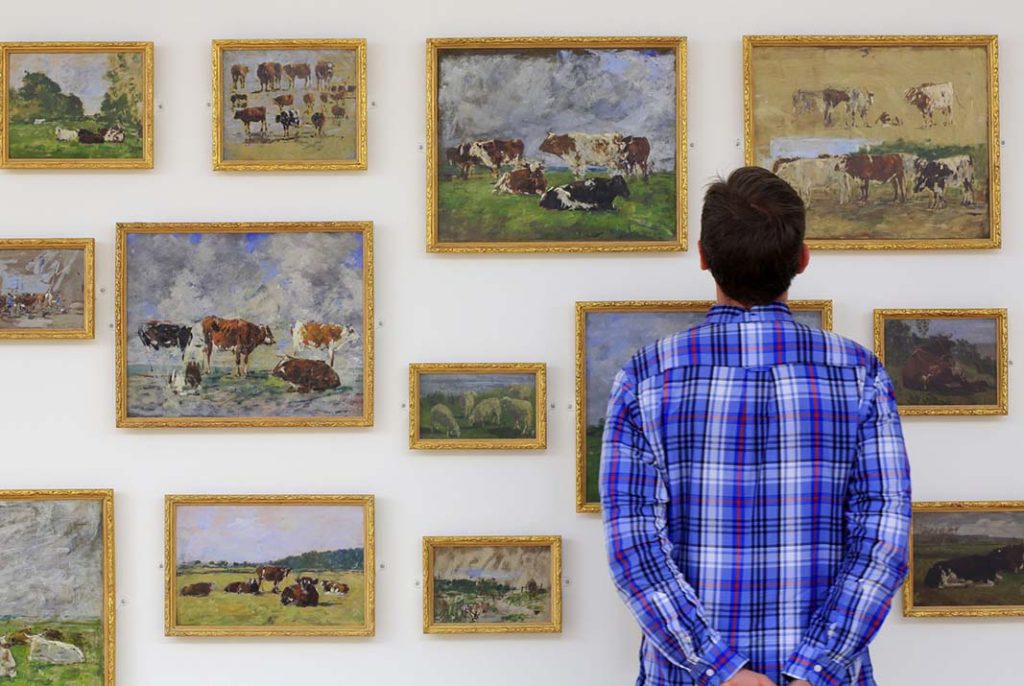
Walking Through the Collections: A Personal Encounter
The Impressionists: Le Havre’s Soul
The first section that truly stopped me in my tracks was the collection of Impressionist paintings. Le Havre has a special place in art history: it was here, in 1872, that Claude Monet painted Impression, Sunrise (Impression, Soleil Levant), the canvas that gave the Impressionist movement its name. That painting now resides in Paris at the Musée Marmottan, but MuMa holds an extraordinary array of works by Monet, Boudin, Renoir, Sisley, and Pissarro.
I found myself standing in front of Eugène Boudin’s beach scenes, captivated by the breezy brushwork and the sense of fleeting light. Boudin was born in Honfleur, just across the water from Le Havre, and he is often called the “king of the skies” for his ability to capture clouds and atmosphere. Looking at his works here, with the real January clouds swirling outside, I felt as if the boundary between inside and outside had dissolved.
Then came Monet. Though not all of his Le Havre paintings are here, the ones that are speak directly to the city’s maritime soul: harbors, ships, mists, and reflections. Standing in front of them, I felt the sea spray on my face.
Fauvism and Beyond
Another highlight was the museum’s collection of works by Raoul Dufy, a native of Le Havre. Dufy’s colors are electric — bold blues, fiery reds, joyous yellows. In the cold grey of January, his paintings felt like stepping into summer. They radiated warmth and life, a reminder of the Mediterranean sun even as the Atlantic winds howled outside.
MuMa also houses works by Georges Braque, Derain, and other 20th-century masters, bridging the story from Impressionism to Cubism and beyond.
Sculpture, Photography, and Contemporary Works
The museum doesn’t end with painting. I found myself drawn to its smaller sculpture collection and its photography exhibits. The interplay of modern art with MuMa’s stark architecture creates an atmosphere of contemplation. Each piece seemed to breathe differently in this space than it would in a dim, enclosed museum.
Practical Visitor Information
- Address: MuMa – Musée d’art moderne André Malraux, 2 Boulevard Clemenceau, 76600 Le Havre, France.
- Opening Hours: Typically open Tuesday to Sunday, 11:00–18:00 (closed Mondays and certain holidays).
- Ticket Prices: Around €10 for adults, reduced rates for students and seniors, and often free for children under 26 (check exact policy as it changes). Sometimes there are free admission days, especially the first Sunday of the month.
- Cloakroom and Facilities: There is a cloakroom, toilets, and a small but pleasant bookshop and café area.
- Accessibility: The museum is fully accessible to visitors with mobility needs.
Where to Buy Tickets
In January, you can usually walk in without worrying about long lines, but I still recommend booking in advance if you prefer a smooth entry. Tickets can be purchased:
- On the official MuMa website (simple and reliable).
- On GetYourGuide (good if you want combined tours of Le Havre).
- On Tiqets (often has mobile tickets you can show at the entrance).
- On Klook (especially useful for Asian travelers booking in English or Chinese).
Prices are consistent across platforms, but sometimes third-party platforms bundle in extra perks, like guided tours or museum passes.
Planning Your Visit
I recommend setting aside at least 2–3 hours for MuMa, though art lovers like me could easily spend half a day. The museum is not overwhelming in size, but its collections invite you to linger.
The best time to visit is in the morning, when the natural light floods the galleries from the sea-facing windows. In January, the light is softer and more dramatic, with long shadows and reflections that add to the experience.
Costs and Budgeting
A typical visit will cost you:
- Ticket: €10 (less if you qualify for discounts).
- Meal nearby: €20–30 per person for a seafood lunch in a local brasserie.
- Accommodation: €70–150 per night for a mid-range hotel in Le Havre (book through Booking.com, Expedia, or Hotels.com for best deals). Airbnb also offers cozy apartments, some with sea views.
Where to Book Your Travel
For those planning a full trip to Le Havre:
- Flights: Use Skyscanner, Google Flights, or Kayak to find the best deals to Paris (Charles de Gaulle or Orly). From Paris, take the train to Le Havre.
- Trains: Book via SNCF Connect or Trainline Europe for Paris–Le Havre routes (around 2h15 from Gare Saint-Lazare).
- Hotels: Booking.com, Expedia, Hotels.com, and Agoda cover a wide range of options.
- Restaurants: Use TheFork (LaFourchette) to book local restaurants and often get discounts.
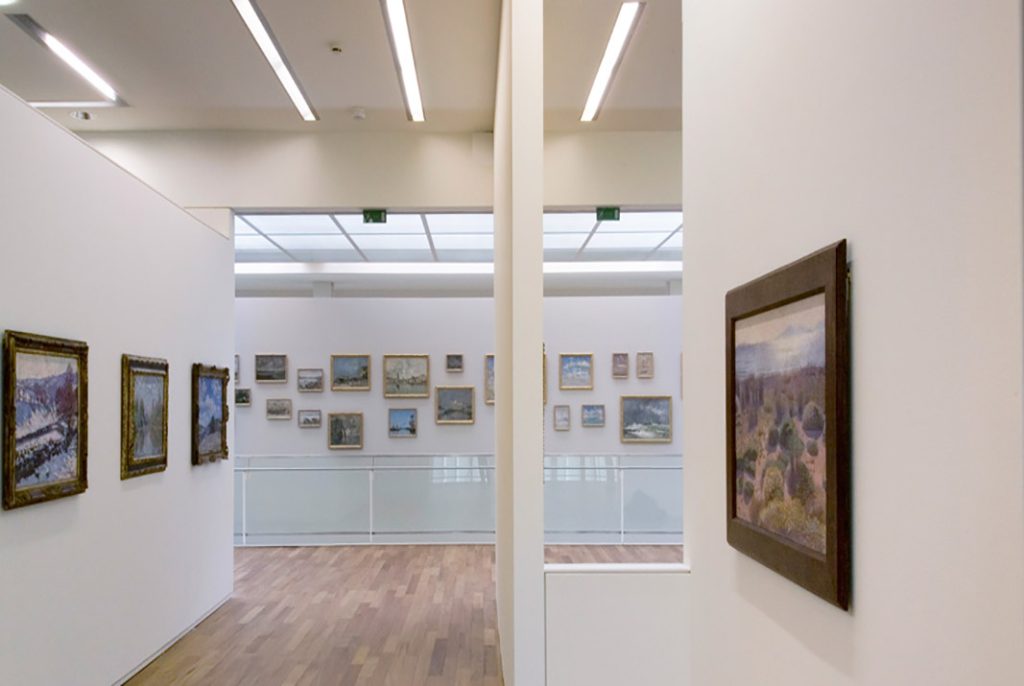
Nearby Attractions Within Walking Distance
One of the best things about MuMa is that it sits right at the heart of Le Havre’s seafront, making it easy to explore other highlights on foot:
- Saint Joseph’s Church – Designed by Auguste Perret, this concrete tower rises like a modern lighthouse. Inside, the stained-glass windows create a kaleidoscope of light. About a 15-minute walk from MuMa.
- Le Havre Beach – Just steps from the museum, this wide pebble beach is perfect for a winter stroll. In January, it’s windswept and dramatic.
- The Port of Le Havre – One of Europe’s busiest ports, offering a glimpse of container ships and maritime life.
- Maison de l’Armateur – An 18th-century townhouse turned museum, showcasing merchant history. About a 10-minute walk.
- UNESCO-listed city center – Wide boulevards, post-war architecture, and cultural life.
Tips for Visiting in January
- Dress warmly: The sea wind cuts through even the thickest coat. Bring a scarf, gloves, and a waterproof jacket.
- Check daylight hours: In January, the sun sets early (around 5 PM), so plan your museum visit for the brighter hours.
- Enjoy the cafés: After MuMa, warm up with coffee or hot chocolate in one of Le Havre’s brasseries.
Why MuMa Moved Me
As I left MuMa that afternoon, the clouds had begun to break, and a sliver of pale sunlight streaked across the water. I looked back at the glass walls of the museum, which now mirrored both sea and sky. It felt like the perfect metaphor for what I had experienced inside: a dialogue between art and nature, between history and modernity, between destruction and renewal.
Le Havre may not have the immediate romance of Paris or the quaint charm of Honfleur, but it has something else: resilience, authenticity, and a museum that is truly world-class. The André Malraux Museum of Modern Art is not just a place to see paintings; it’s a place to feel them, to let them resonate with the landscape outside and with your own inner landscape.
For me, visiting MuMa in January was more than a museum trip. It was a meditation on light, time, and survival. It was a reminder that art, like cities and like people, can be reborn from the ashes.
If you are an art lover, don’t just rush from Paris to Normandy’s more famous spots. Stop in Le Havre. Stand in front of Boudin’s skies and Monet’s harbors. Let Dufy’s colors warm you in the winter chill. You’ll walk out changed — I know I did.
